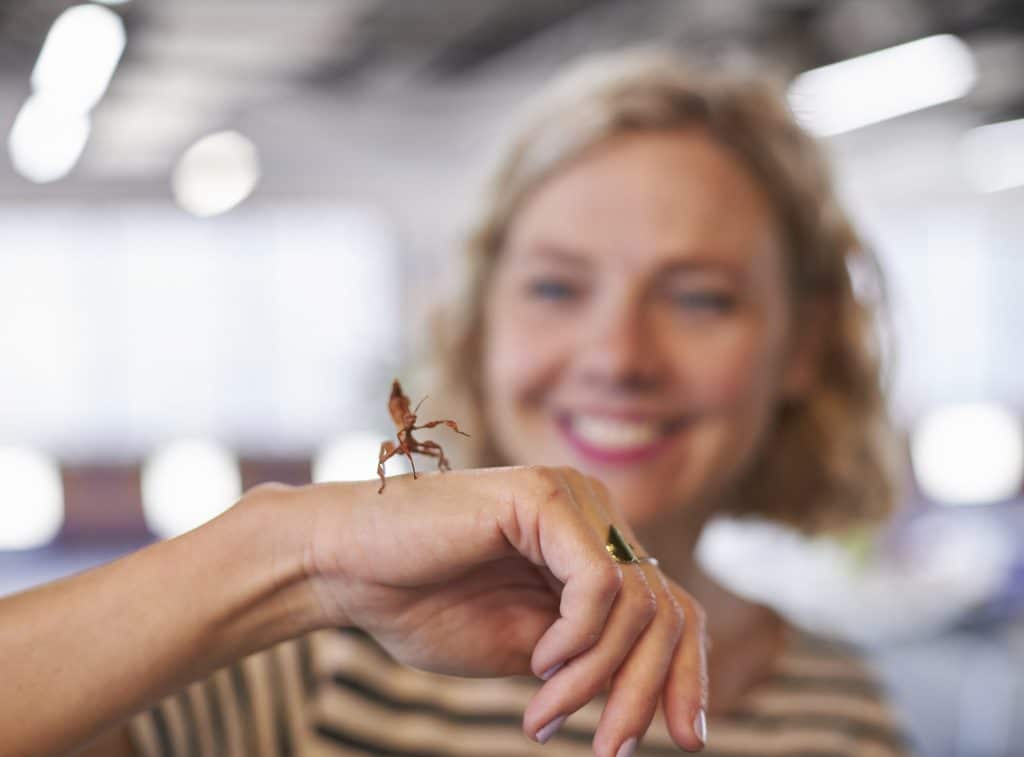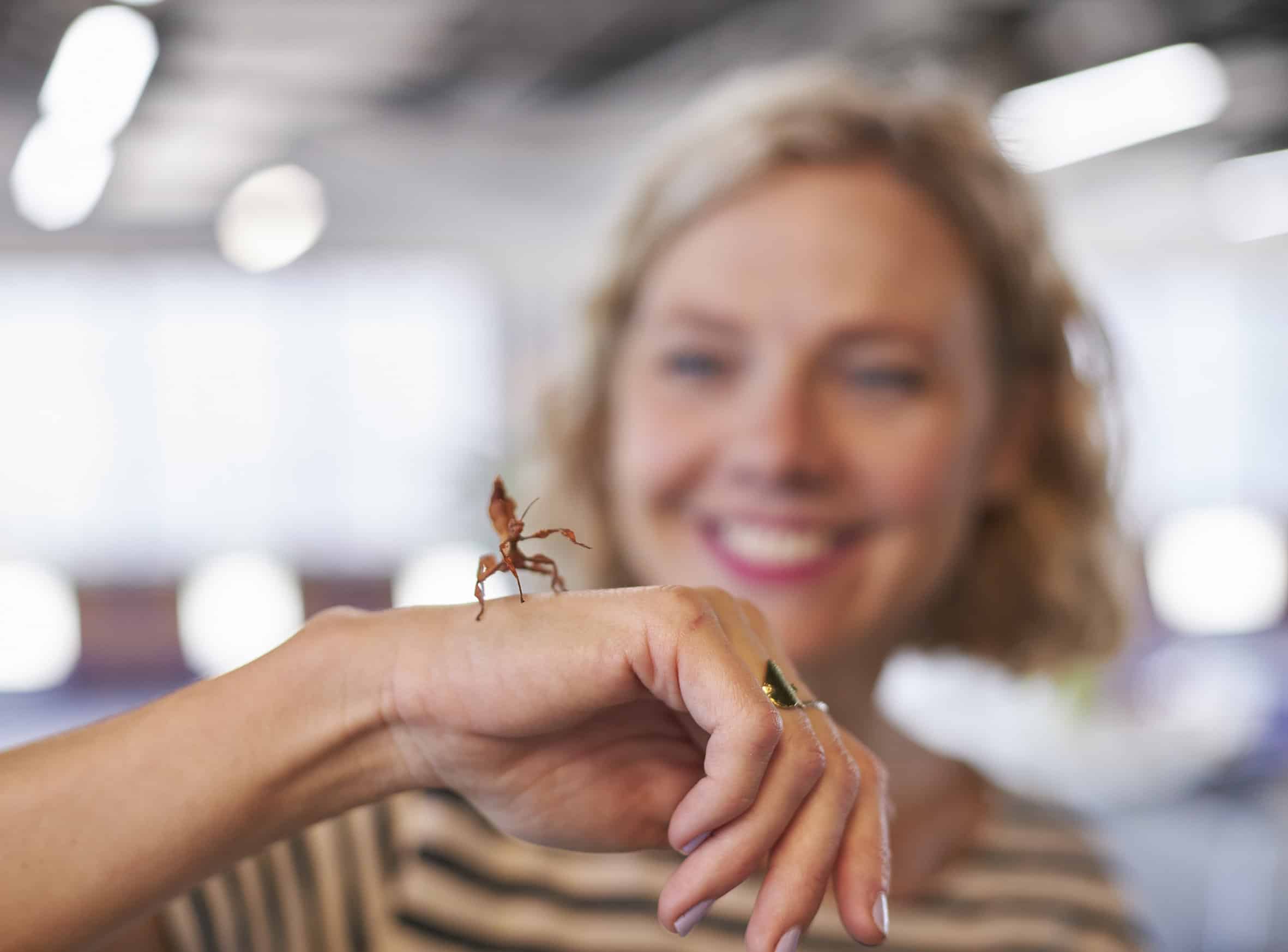- 352 South St, O'Connor WA 6163
- (08) 6225 5005
- hello@happypetplace.com.au
I’m looking for…
I’m looking for…

Are you fascinated by the unique and captivating world of stick insects, known as Plasmids. These extraordinary creatures make fascinating pets, offering a glimpse into the wonders of nature. If you’re considering adding a stick insect to your family, here are three essential tips to ensure your new pet thrives. Read on to discover how to keep stick insects as pets successfully.
1. Creating the Perfect Habitat for Stick Insects
A suitable habitat is crucial for the well-being of your stick insects. These insects require an environment that mimics their natural surroundings to thrive.
Choosing the Right Enclosure: Opt for a tall, well-ventilated enclosure to accommodate the stick insect’s natural climbing behaviour. Ensure the enclosure is escape-proof, as stick insects are excellent climbers and can easily slip through small gaps.
Temperature and Humidity Control: Maintaining the right temperature and humidity levels is vital. Stick insects generally thrive at temperatures between 20-25°C. Use a thermometer to monitor the temperature inside the enclosure. To maintain humidity, mist the enclosure with water regularly and provide a shallow water dish. This helps to create a microclimate similar to their natural habitat.
Providing Adequate Foliage: Stick insects rely on foliage for both food and shelter. Populate the enclosure with non-toxic plants such as eucalyptus & peppermint leaves. Fresh leaves should be added regularly to keep your stick insect healthy and well-fed.
2. Feeding Stick Insects: What Do They Eat?
Proper nutrition is key to the health and longevity of your stick insect. Understanding their dietary needs will help you provide the best care possible.
Fresh Leaves: Stick insects are herbivores and feed on leaves. Our Stick Insect varieties love eucalyptus, peppermint leaves & Lillypilly’s. These leaves are readily available in most Australian gardens and local parks. Leaves need to be changed regularly.
Water Source: Stick insects obtain moisture from the leaves they consume. To ensure they stay hydrated, maintain a high humidity level in the enclosure, spray the leaves daily in winter and twice daily in summer. Keep the branches of the leaves in water, this not only assist with keeping the leaves fresh for longer it also assists to maintain the humidity level.
3. Handling and Caring for Stick Insects
Stick insects are delicate creatures that require gentle handling and careful care to avoid injury and stress.
Gentle Handling: When handling stick insects, be extremely gentle. Support their bodies and avoid squeezing or pinching. Stick insects can be easily stressed, so limit handling to necessary occasions like cleaning the enclosure or moving them to a different habitat.
Regular Cleaning: Maintaining a clean enclosure is essential for the health of your stick insects. Remove any uneaten food, shed skins, and waste regularly. Clean the enclosure thoroughly every few weeks, ensuring no harmful chemicals are used. This helps prevent the buildup of mould and bacteria.
Monitoring Health: Keep a close eye on your stick insects for any signs of illness or distress. Common issues include moulting problems, dehydration, and fungal infections.
By following these three essential tips, you can create a thriving environment for your stick insects and enjoy the fascinating experience of keeping these unique creatures as pets. Stick insects make wonderful companions, offering a window into the marvels of nature right in your home.
Stick insects are captivating pets that bring a touch of nature into your home. By providing the right habitat, nutrition, and care, you can ensure your stick insects lead healthy and happy lives. Embrace the joy of keeping stick insects as pets and discover the wonders of these extraordinary creatures.
The Happy Pet Place has a dedicated Terrarium set up with a number of different Stick Insect species to view and purchase. For more information on keeping these fascinating animals pop into The Happy Pet Place, 352 South Street, O’Connor – Perth’s Premier Store for all your pet’s needs.
